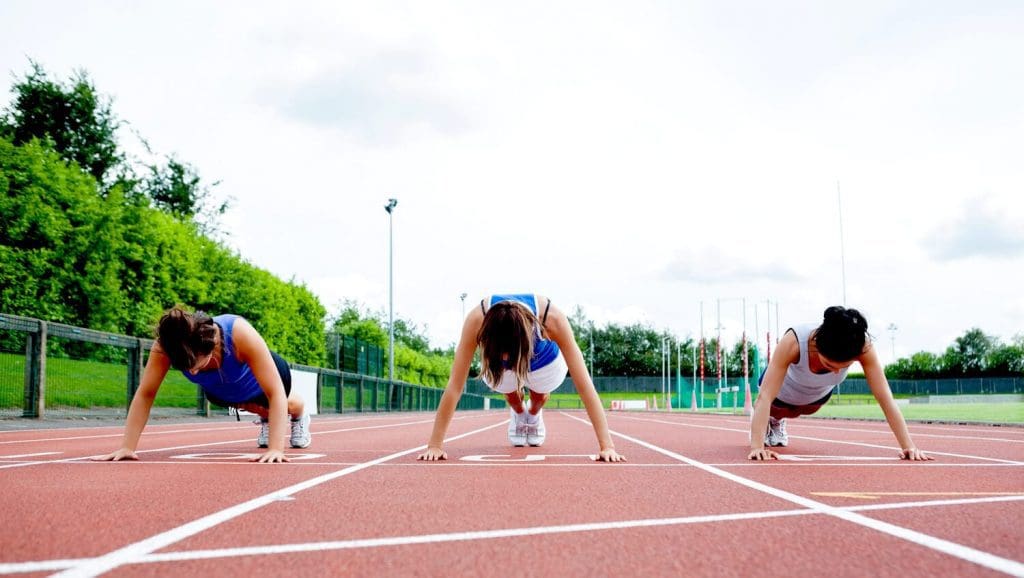Physical Education has never been more important than it is right now. Even before the outbreak of Covid, obesity, inactivity and increases in feelings of sadness and hopelessness were all on the rise in a major way. Forced isolation and quarantines only exacerbated an already worrisome trend. So why is physical education important?
We can and must take immediate action to change the course of our children’s physical and mental well-being. In fact, the CDC identifies schools as one of the most effective settings in the community to address preventable health problems such as obesity.
Why then have we seen Physical Education become less funded and less prioritized? Why is Physical Education not the cornerstone of today’s education system? And lastly, how can we change the course of our childrens’ declining physical health, mental health, and wellness by investing in Physical Education? Well, to know how we got here, let’s first start from the beginning.
Why Physical Education is Important – A Brief History
In the early 1800’s Physical Education was a private pursuit focused squarely on gymnastics and personal hygiene. By the middle of the century, though, Public Schools in the United States were requiring daily exercise of all students, even including calisthenics into the formal curriculum.
Over the next hundred years or so, though, physical education class in schools shifted away from pure physical conditioning and towards more of a sport- and game-dominated subject.
Then, the threat and inevitable outbreak of global war forced the government to push PE back towards fitness education and physical standards (driven mostly by a need for a fit “fighting-age” population). The oft-debated “Presidential Fitness Test” was a direct result of this movement. It wasn’t perfect, but physical fitness and exercise was a priority. Schools and our country saw the importance of physical education.
Economic downturns in the 1970’s and 1980s, though, and the subsequent budget cuts, led to a drastic decline in the presence of comprehensive PE programs in our nation’s educational institutions.
2 Minute Bonus Video Content! Check out the mental and physical benefits of fitness.
Phys Ed In School Today
These days, instead of being presented with regular activity and exercise, our students are now more sedentary than ever.
In fact, the United States earned a D- in Overall Physical Activity within the recently released 2018 U.S. Report Card on Physical Activity for Children and Youth.
Research has shown a disturbing trend amongst our nation’s students with regards to activity levels:
- Only 6% of students get the recommended 60 minutes of physical activity each day.
- Just 30% attend any sort of PE class every day. Worse, over 50% attend such a class just once a week!
To make matters worse, PE has become the subject from which students claim exemption on a regular basis. From physical or cognitive disability, to participation in other school activities, like band or art class – these days there are many “acceptable” reasons for missing PE.
Across the country, students are being asked to sit more, and move less.

Why Is PE Important in school?
The Problem: As a result of a declining commitment to PE in schools across the country, for middle and high school students, overall physical fitness rates have been in decline since the turn of the millenia. In fact:
- Less than half of 12 to 15 year old youth have adequate cardiorespiratory fitness levels
- Only 52% of children between 6 and 15 years old have adequate muscular endurance, based on the number of pull-ups performed
- Of High School-aged students, just 5.3% of boys and 12.1% are in the “excellent” Health Benefit Zone for grip strength.
To make matters worse, this drop in physical fitness can lead to all sorts of harmful situations down the road as kids age. As kids graduate and move on with their lives, they are at greater risk for all of the following:
- High Blood Pressure & Cholesterol
- Cardiovascular Disease and Heart Disease
- Impaired glucose tolerance, insulin resistance, and type 2 diabetes.
- Asthma & Sleep Apnea
- Low Bone Density & Joint Problems
What’s more, happiness, stress-level, and academic achievement are also all at risk when physical activity and fitness are not made a priority within education.
In fact, hundreds of studies have come out in just the last few years, all illuminating a direct positive connection between formal physical education programs and improved academic achievement and happiness.
Ready to Prove Why PE Matters?
Uncover successful strategies for vertically aligning your PE curriculum and providing a more engaging experience for students!

What is the importance of physical education for students?
The Solution: Fitness Education, it seems, may just be the secret sauce for effective education!
According to researchers, regular, structured physical activity directly affects the brain’s physiology in such a way that improves education and learning.
Exercise, and the associated increase in blood flow and oxygenation in the brain leads to the development of cerebral capillaries, the production of neurotrophins, the growth of nerve cells, and the overall improvement of the brain’s neural network.
Your brain, itself, will grow in size.
As a direct result of this cerebral activity, this “brain exercise,” there lies a proven positive association to academic achievement.
In Naperville, Illinois, math and reading scores shot through the roof when PE was mandated and placed at the beginning of every school day.
Regular Exercise Creates Better Learners
Regular physical activity, and its effect on students’ brains and biochemistry leads to improved execution functioning and cognition. Students concentrate better, have better memory, and can process, store, and retrieve information more effectively.
Perhaps most importantly, though, there has been shown to be absolutely NO downside to spending more time in PE and less in other subjects:
“The studies also suggest that increased time spent in physical education is not likely to detract from academic performance even when less time is devoted to subjects other than physical education.”
When push comes to shove, spending more time in structured PE is proven to be an effective way of creating better learners and higher achieving students.
Additional Benefits of Physical Education
While standardized test scores and academic achievement are important, the positive emotional effects of fitness education may be even more important.
As reported by the APA in 2018, depression and anxiety are affecting our teens worse than any other age group. Intense schedules, social pressures, and rising academic/athletic/personal expectations have taken their toll on our youth.
Today’s generation of students and young adults are more stressed than ever before.
Luckily, an investment in activity and physical education can pay dividends here, as well as exercise has been shown to:
- elevate mood
- positively influence depression and anxiety
- reduce psychosocial stress
- enhance various aspects of self-esteem.
Additionally, school & classroom behavior appears to be radically improved as well.
Studies have continuously found associations between PE and impulse control, attention, attitude, and task-based behavior amongst students throughout their school day.
Schools that enhanced the presence of Physical Education and school-sanctioned physical activity have experienced less educational “disruption” in general. In fact, there exists a strong correlation between high physical fitness achievement and a concurrent improvement in attendance and decrease in disciplinary incidents.
In a generation full of behavior disorder diagnoses, and medicated kids, this goes even farther. Parents and teachers of children with ADHD reported markedly improved behavior following structured physical activity.
Long story short, kids who are engaged in regular physical fitness programs have more positive moods, better classroom behavior, and feel less stress.
Key Takeaways On Why Physical Education Is Necessary for Every Student
The evidence is clear. Our kids’ health and well-being is more at risk than ever before.
Schools are the best and most universal avenue in which to enact change.
Within schools, Physical Education departments are best suited to spearhead the school’s fitness and wellness plans. Empower physical education teachers to lead the charge!
Making such an investment in Fitness will not only improve the physical health and wellness of our students, but it will also bolster their learning and focus throughout the school day.
Therefore, school districts must immediately rethink their funding for and prioritization of physical education. Some simple but impactful changes might be:
- Require PE every year, and every semester
- Coordinate the approach to PE across Jr and Sr High Schools so that it is a continued experience of quality physical education, similar to how Math and Science are progressed
- Remove the ability to “opt-out”
- Aim for 150 minutes of PE a week ie: regular physical activity/daily physical education (that’s only 30 minutes a day!)
- Increase the budget for Physical Education programs departments and invest in fitness facilities
FAQ
Why is physical education important in high school?
The important role of a quality physical education doesn’t end at elementary school or middle school. As our young people approach adulthood, high school is one of the last opportunities students have a chance to participate in daily physical education. From here, students can leave high school equipped with physical exercise skills that will help them lead a healthy lifestyle for years to come. Better yet, there are endless high school PE lesson plans at your disposal!
What do you learn in physical education?
Physical education class promotes a wide-range of skill development. SHAPE America’s National Standards & Grade-Level Outcomes for K-12 Physical Education define what a student should know and be able to do as result of a highly effective physical education program.
Example – Standard 1: The physically literate individual demonstrates competency in a variety of motor skills and movement patterns.
PE Articles & Helpful Links
There are hundreds of great articles that support and answer the questions around the importance of physical education. What is physical education and why is it important? Check out any of these helpful articles and resources to take an even deeper dive!
- https://injuryprevention.bmj.com/content/27/1/85#ref-2
- https://www.nassp.org/2019/01/01/fit-to-learn-january-2019/
- https://education.stateuniversity.com/pages/2324/Physical-Education.html
- http://physicalactivityplan.org/projects/reportcard.html
- https://www.cdc.gov/healthyyouth/health_and_academics/pdf/pa-pe_paper.pdf
- https://www.ncbi.nlm.nih.gov/pmc/articles/PMC4606776/
- https://abcnews.go.com/WN/exercise-school-leads-learning/story?id=10371315
- https://iphionline.org/pdf/IPHI_Enhanced_PE_Fact_Sheet.pdf
- https://www.cdc.gov/healthyyouth/health_and_academics/pdf/pa-pe_paper.pdf
- https://www.developmentalscience.com/blog/2019/5/7/our-teens-are-more-stressed-than-ever





